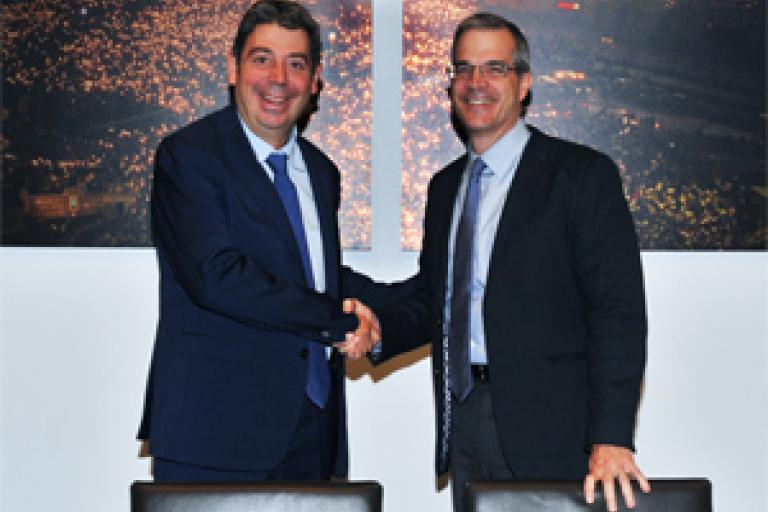SPLASH! Environmental Awards 2008

The SPLASH! Environmental Award Winners 2008

Proudly supported by Foundation Sponsor Sunbather
Residential Environmental Award
(Sponsored by Foundation Sponsor, Sunbather)
Winner: Aquastone
“We were thrilled to receive the inaugural SPLASH! Environmental Award,” says Gavin Bazley of Aquastone. “We’ve found it’s been a great talking point with clients, especially in today’s day and age when everyone is so conscious about the environment.
“People like certain aspects of the winning pool, and they adapt these aspects to their own personal design. We’ve advertised our win on our website and it’s always great to be able to showcase a win like this – it certainly attracts interest. Thanks again SPLASH! for such a fantastic initiative.”
The first Environmental Awards in the world for the swimming pool industry were presented at a gala dinner on the Gold Coast by SPLASH! magazine, as part of SPLASH! Week. Entries for the awards were received from every state in Australia and also from New Zealand.
Finalist: Out from the Blue
Commercial Environmental Award
Sponsored by Sancell
Indoor Pool Award: Harry Seidler and Associates
Pool Shop Award (Sponsored by Pentair)
Highly Commended: Poolside Frankston
Residential Environmental Award Winner
Pool built by Aquastone
Pool designed by Paul Scrivener Landscape Architects in conjunction with Sanctum Design for Claron Property Group.
Landscaping by Michael Cooke Garden Design
Sponsor: Sunbather
The use of an automatic pool cover
The judges considered a pool cover of very high importance in water conservation and also in reducing power consumption, as well as having an influence in more efficient chemical usage. The judges considered automatic pool covers to be the best pool cover option, followed by pool covers with rollers, followed by manually operated covers without rollers.
A glass fence
Solid fencing can help reduce evaporation caused by the wind, and glass pool fencing also fulfils safety requirements.
Giant water reservoir
Capable of storing 200,000L (133% the volume of the pool) from rainwater harvesting (and also from bore water, which was not considered necessarily environment-friendly).
Solar power generation
The pool is run on energy generated by solar power. Although the solar capacity was not quantified, the entrant said it is enough to run the house and pool, and also feed energy back into the grid.
Use of wide bends in pool plumbing
Demonstrates an understanding of how to minimise energy use through thoughtful hydraulic design, which can considerably reduce the power demand on the pump.
Heat pump
Heat pump technology is second only to solar pool heating as the most environment-friendly way to heat a pool. Combined with the fact the energy comes from solar power generation, this is very environment-friendly in this instance.
Noise minimisation
A double-brick pool room was built to minimisation the noise from the pool equipment. While the isolated nature of this pool does not make noise a major concern, it is generally a very good idea to reduce it as much as possible, as the pump can then be run outside peak times without disturbing residents or neighbours.
Other features:
• C-bus linked automatic pump timer
• The use of drought resistant plants in landscaping
Residential Environmental Award Finalist
Pool designed and built by Out from the Blue
Sponsor: Sunbather
Victorian design and construction company Out from the Blue was the runner-up in Residential Environmental Award for this pool built in Tasmania. While not quite to the same exceptional standard as the winning project, this pool was considered to be very good.
Its highlighted features include:
The use of an automatic pool cover
The cover can drastically reduce water consumption through evaporation, as well as reducing power consumption and chemical wastage. Automatic covers are more likely to be used by the owner than manually operated ones.
A glass fence
Glass pool fencing can help reduce evaporation caused by the wind.
Solar heating
The pool has 100 per cent solar pool heating coverage, as well as gas for the shoulder season.
The use of wide bends
The use of wider diameter pipes and wide bends (as opposed to 90-degree bends) can have a very strong impact on the hydraulic resistance, hence how much energy is used by the pump.
Circulation system
The in-floor cleaning and circulation system helps ensure optimum distribution of sanitising chemicals, improving chemical efficiency.
Potential for re-use of backwash
The Magna Pool sanitising system is based on magnesium and potassium salts, which means there is no sodium deposited on the plants if the backwash is directed onto the garden or lawn. Being able to actually take advantage of that possibility depends on individual council regulations.
Other features:
• Pool equipment fully enclosed in concrete room
• Retaining walls made from local recycled rock
A third entry was considered worthy of discussion as it showed a potential way forward. Although it is still in the developmental stages, The Peter Glass and Associates’ bio-filtration concept shows potential for the establishment of a chemical-free pool. However, there are still regulatory and health issues to be overcome before this can become a reality.
Commercial Environmental Award – Indoor Pool
Pool designed by Harry Seidler and Associates
Project: Ian Thorpe Aquatic Centre, Sydney
Sponsor: Sancell
This is a truly unique project which has already become an icon in its home town, while raising environmental credentials to a new level for a project of this scope.
Many features in this project show considerable thought had been given to environmental issues, including:
Condensation minimisation
The shape of the roof enables condensation minimisation by directing air flow over its surface.
Natural ventilation system
Weather-station-operated vents and opening glass panels enable chemical-laden air to be dispersed. On some days, this means the pool can have 100 per cent natural air.
Rainwater harvesting
Rainwater used in ablutions facilities and for fire control.
Vertical sand filters
Use of vertical sand filters creates a more efficient filtration system by maximising the filtration potential and eradicating filter “dead zones”.
Splash water minimisation
The splash water from the pool deck is channelled back through the filtration system to the balance tank.
Dual pumps
Each pool can operate with one recirculation pump or two depending on bather load, so energy usage can be reduced.
Use of natural light
Natural light is brought in through large windows and glazed “light ribbons”. The effect is accentuated by the curvature of the roof, meaning the need for artificial light is drastically reduced. Erco uplights are used when natural light is not available.
Other features:
• Energy efficient heat pumps for heating water
• Heat recovery from exhaust heat
• Strategically placed floor nozzles for circulation
• Plant room acoustically separated and away from sensitive areas
• Pool hall includes insulation to reduce pool noise
• Power co-generation being investigated
• High class formwork recycled on the job
• Concrete waste recycled into road base
Commercial Environmental Award – Outdoor Pool
Renovation by SSL
Project: St Kentigern College Pool, Auckland.
Sponsor: Sancell
There were three key features of this project:
Giant automatic pool cover
The installation of the largest slatted pool cover in the southern hemisphere. To cover the 500-square-metres of water surface area, the cover had to be made in two parts, which operate simultaneously. The cover drastically reduces water consumption through evaporation, as well as reducing power consumption and chemical wastage.
Solar pool heating
100 per cent solar coverage was installed, enabling the pool water to be warmed with the minimum environmental impact; the pool cover then conserves that heat.
Large rainwater tanks
54,000L rainwater tanks were installed for the ablutions block and to water the landscaping, lawn and garden.
Pool Shop Award
Highly Commended: Poolside Frankston
Sponsor: Pentair
The judges considered that none of the entries in the Pool Shop Award category fulfilled enough of the criteria to be given the major award. However, they felt that Poolside Frankston showed enough consideration of environmental issues that their entry was Highly Commended.
The pool shop actively promoted environmental products and ideas, including gaining coverage in the local newspaper for stories on saving water, energy and chemicals in backyard swimming pools.
They have a product range which includes water and energy saving products, and design the mobile technicians’ travelling routes to minimise petrol consumption.
The entrant also pointed out that they intend accelerating their efforts in these areas in the near future.
As one judge said: “This pool ticks all the boxes.” The decision was unanimous. The highlighted features include:














